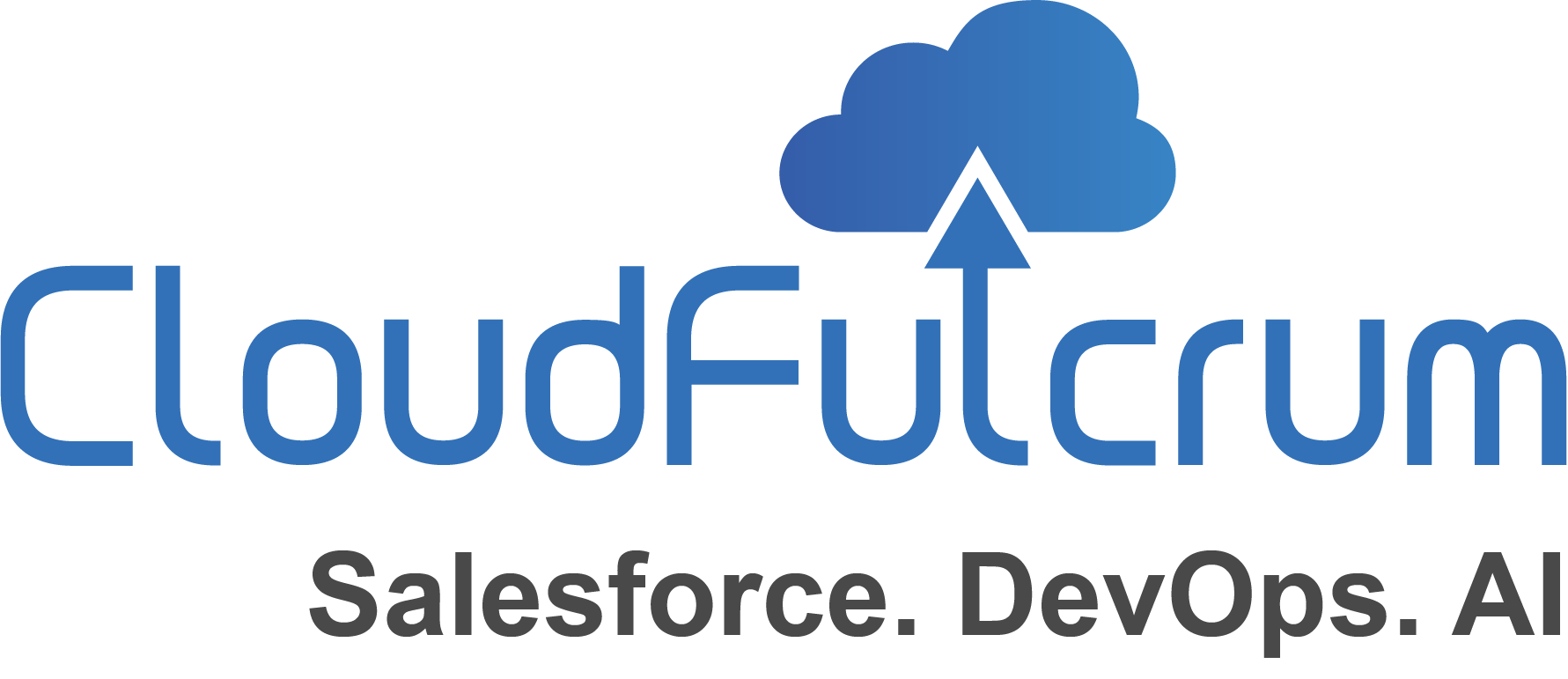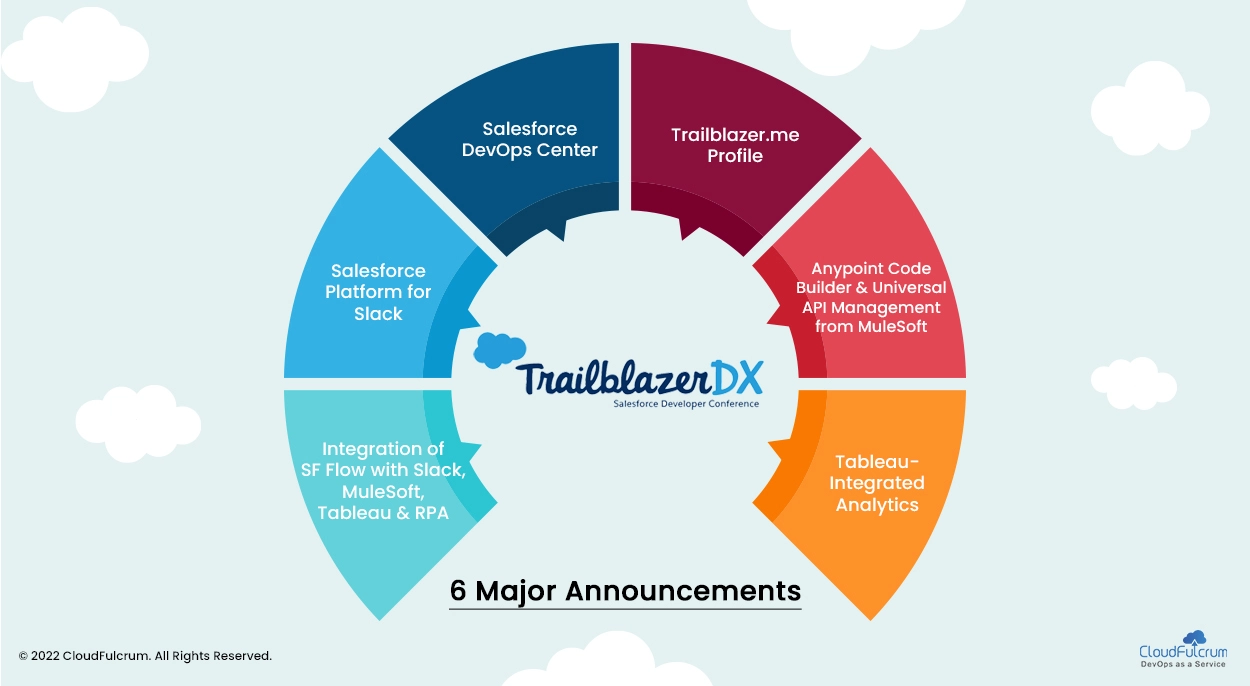TrailblazerDX is a flagship event of Salesforce that creates a platform for builders, i.e., Salesforce Admins, Developers and others, to get inspired and innovate within their own business community using the Salesforce platform.
There were two core themes in TrailblazerDX (TDX) ’22
1. Integrating Three Platforms with Salesforce
Integrating MuleSoft, Tableau, and Slack – these three were the result of high-value acquisitions – with Salesforce. TDX updates will concentrate on how Salesforce have worked to integrate each of the developer experiences and take advantage of Flow automation across these multiple platforms in what’s being publicized as an ‘era of new automation.’
2. Developers’ Role in Digital Transformation
With the increase in burnout rates of developers, Salesforce recognizes that it can scale up the usage of Salesforce as the backbone of their tech stacks only by empowering low-code individuals. We all can be ‘developers’, i.e., can do what earlier only developers could achieve, with the support of low-code capabilities of Salesforce.
Parker Harris, the Co-founder and CTO at Salesforce emphasized the global context in which TDX happened – amidst skill shortages, the ‘Great Resignation,’ flaring inflation, supply chain disruption, and global energy crisis. This is an era where we must do more with less.
1. Integration of Salesforce Flow with Slack, MuleSoft, Tableau, and Robotic Process Automation (RPA)
There is a massive impetus around Salesforce Flow. Salesforce has been directing an enormous amount of resources into developing Flow innovations that will integrate products across their portfolio. This has resulted in some remarkable stats: Salesforce drives more than 1 trillion automations every month, which is approximately 44 million every day. Salesforce Flow will enable Salesforce builder to leverage the benefits of Slack, MuleSoft and Tableau and RPA technology.
2. Salesforce Platform for Slack
Salesforce is very closely integrating Salesforce and Slack and the new platform is called ‘Salesforce Platform for Slack.’ The integration is such that anything that you build in Salesforce will now be ready to be triggered from or interact with Slack. Salesforce Developers and Admins can take advantage of the current authentications, UI definitions, automation, Apex and more.
The Salesforce Platform for Slack release includes two sets of capabilities:
- Flow in Slack (Low-code)
- Apex SDK for Slack (Pro-code)
Using the development capabilities of Salesforce Platform for Slack, the Slack engineering team is building three improved applications for Sales Cloud, Marketing Cloud, and Service Cloud, which are going to be announced in the near future.
3. Salesforce DevOps Center
In the near future, DevOps Center will not just be a substitute to change sets, since DevOps itself is a massive enhancement over old workflows using change sets. TDX featured DevOps Center several times in multiple sessions, and a public beta of it has been confirmed for June 2022.
4. Trailblazer.me Profile
If you are looking for a trusted resume for the Salesforce ecosystem, then Trailblazer.me will be the one. The improved profile will allow your to flaunt your credentials not only on Salesforce but also across Slack, MuleSoft and Tableau.
5. Tableau-Integrated Analytics
With the help of new tools for integrating Tableau analytical experiences into their own products and applications, developers will now be empowered to take data visualizations to greater heights. Tableau wants the developers to express their full creativity and connect to any or all data. The Web Data Connector 3.0 is a toolkit that helps in building new connectors through reusable libraries. Eventually, Tableau will be embedded with Salesforce Flow to harmonize insight and action. Salesforce Flow powering automation from Tableau insights is a giant leap in integrating the two products.
6. Anypoint Code Builder & Universal API Management from MuleSoft
Anypoint Code Builder (ACB) is a novel Integrated Development Environment (IDE) that helps create APIs and integrations. Salesforce intends to make ACB as the No.1 IDE, which seems achievable. ACB uses state-of-the-art, open-source VS Code, which is well-known to all Salesforce developers. Default recommendations and access to a library of building blocks for common API and integration patterns will augment the productivity of developers.
While building effective APIs is one dimension of the challenge, the other dimension is sharing them. Mulesoft’s revolutionary new approach, Universal API Management, proves to be very useful in this. Sharing APIs is the crux that allows more people across the business to integrate themselves and ward off pressures from development teams, thus enabling them peace of mind in governance.
Today, there are about 16 million Trailblazers and approximately 22 million developers worldwide. With the number of Trailblazers almost equal to the number of developers globally, enormous amount of value can be created by working together using APIs.

